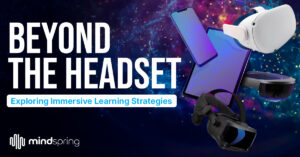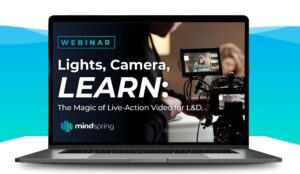
In corporate learning and development, choosing between custom and off-the-shelf learning content is not about selecting one over the other but understanding how to effectively integrate both to build a comprehensive learning strategy. Each type of content serves unique purposes and, when used synergistically, can greatly enhance the learning experience, catering to immediate needs while fostering long-term growth and adaptability within an organization.
Understanding the Differences
Off-the-shelf content is pre-designed and ready for immediate use, making it ideal for teaching standardized topics that are common across multiple industries. On the other hand, custom content is tailor-made to address specific organizational needs, aligning closely with a company’s unique goals, culture, and challenges.
Benefits of Off-the-Shelf Content
- Cost-Efficiency: Due to its mass production, off-the-shelf content is generally more budget-friendly. It allows for extensive dissemination without the need for significant additional investment per user. Additionally, while off-the-shelf content capitalizes on economies of scale, custom content may become comparably less expensive as user count increases, offering a scalable solution that can adapt to large-scale learning needs effectively.
- Speed of Deployment: When training needs to be implemented quickly, off-the-shelf content is invaluable as it is readily available and can be quickly rolled out across an organization.
- Reliability: Since this content is used widely, it is continuously updated and refined based on broader user feedback, ensuring quality and relevance.
Benefits of Custom Content
- Highly Targeted Learning: Custom content provides tailored solutions that are specifically developed to enhance the skills most relevant to an organization’s strategic objectives.
- Greater Engagement: By incorporating real-life scenarios from the specific organizational context, custom content tends to be more engaging and relatable for learners.
Long-term Relevance: Custom materials can evolve with the company, providing a flexible framework that adapts to ongoing changes and growth within the business
What to Look for in an Off-the-Shelf Provider
When choosing an off-the-shelf content provider, consider the following key factors:
- Content Quality and Depth: Ensure the content is up-to-date, accurate, and comprehensive.
- Customizability: Look for options that allow some level of customization to better fit your organizational context.
- Scalability: The content should accommodate the size of your organization, from a few employees to several thousand.
- Support and Updates: Good providers offer continuous support and regular updates to the content, keeping it relevant as industry standards evolve.
- User Experience: High-quality user interface and experience, facilitating ease of use and learner engagement.
What to Look for in a Custom Content Provider
Selecting a custom content provider requires attention to different aspects:
- Expertise: The provider should have a proven track record in developing custom content based on a solid understanding of learning science.
- Collaborative Process: They should work closely with you to understand your needs and develop content that reflects your business goals and culture.
- Innovative Solutions: Look for providers that use innovative approaches and the latest technology to create engaging and effective content.
- Scalability and Flexibility: The provider should be able to scale the solutions as your company grows and adapt content over time as needs change.
- Quality Assurance: Ensure they have a robust process for testing and feedback to deliver high-quality, effective learning experiences.
Integrating Both for a Comprehensive Approach
A well-rounded learning strategy recognizes the value of both off-the-shelf and custom content. Here’s how integrating both can maximize training effectiveness:
Foundational Knowledge
Off-the-shelf content is excellent for establishing a baseline of knowledge across common subjects such as compliance, basic skills, and standard procedures. This ensures that all employees have a solid foundation and are up to date with necessary general practices and regulations.
Specialized Skills Development
Custom content is crucial for training that targets specific skills or advanced topics unique to the company. It allows the learning experience to directly reflect the strategic directions and nuanced needs of the business, providing learners with materials directly applicable to their roles.
Cost and Resource Allocation
Using off-the-shelf content for general knowledge areas helps manage training budgets more effectively, allowing more resources to be allocated towards developing bespoke content for critical, high-impact areas where customized training can drive significant business value.
Timeliness and Adaptability
While off-the-shelf options provide immediate solutions, custom content can be developed to address emerging trends and changes specific to the industry or organization. This dual approach ensures that learning is timely and adaptable, with the flexibility to update or refine materials as the business evolves.
The debate between custom and off-the-shelf content shouldn’t be seen as an either/or scenario but rather as an opportunity to leverage the strengths of both to create a dynamic and effective learning environment. By strategically integrating off-the-shelf content for broader learning needs and custom solutions for targeted development, organizations can ensure that their training programs are both cost-effective and deeply relevant. This balanced approach enhances immediate learning outcomes and builds a resilient and adaptable workforce equipped to meet future challenges.


